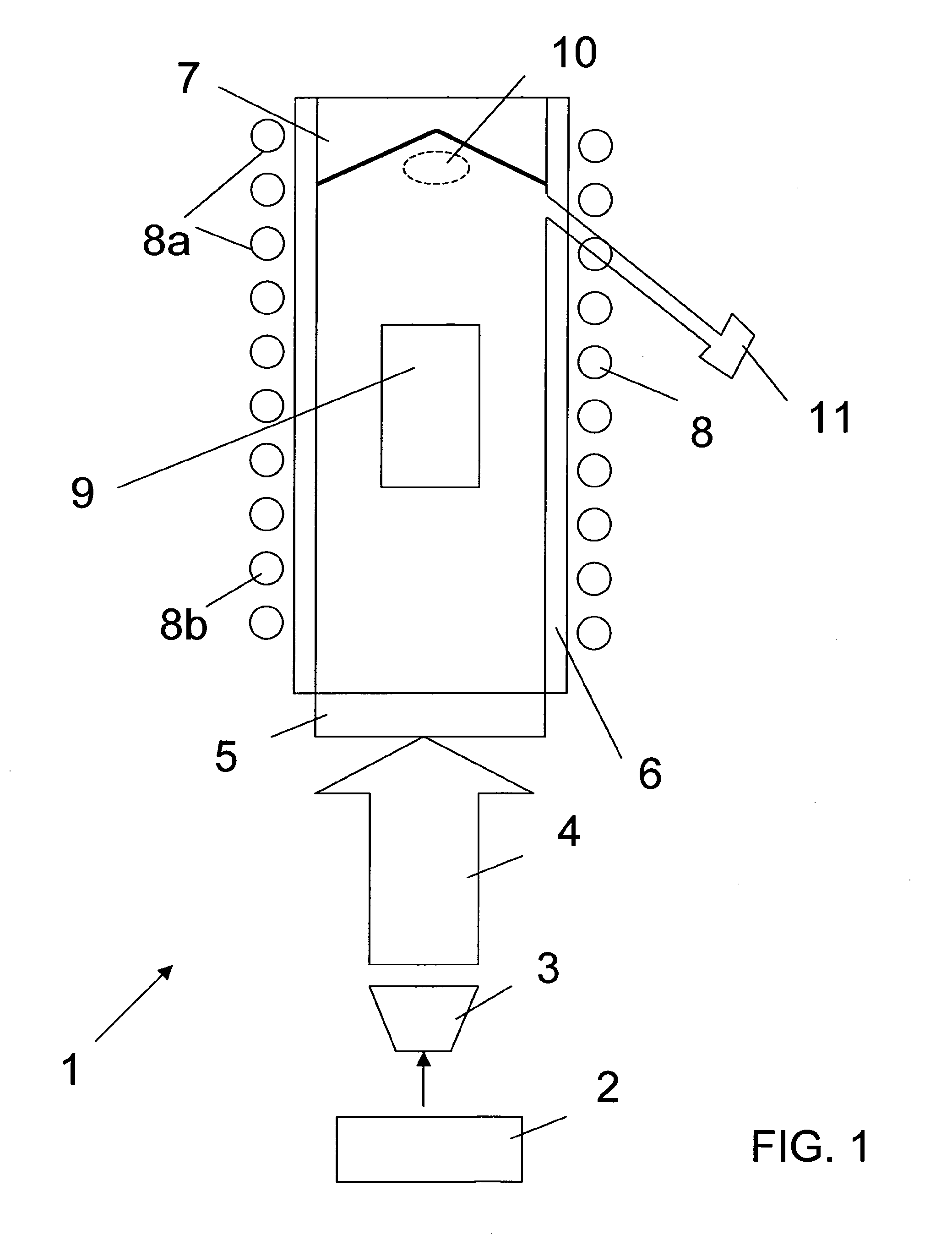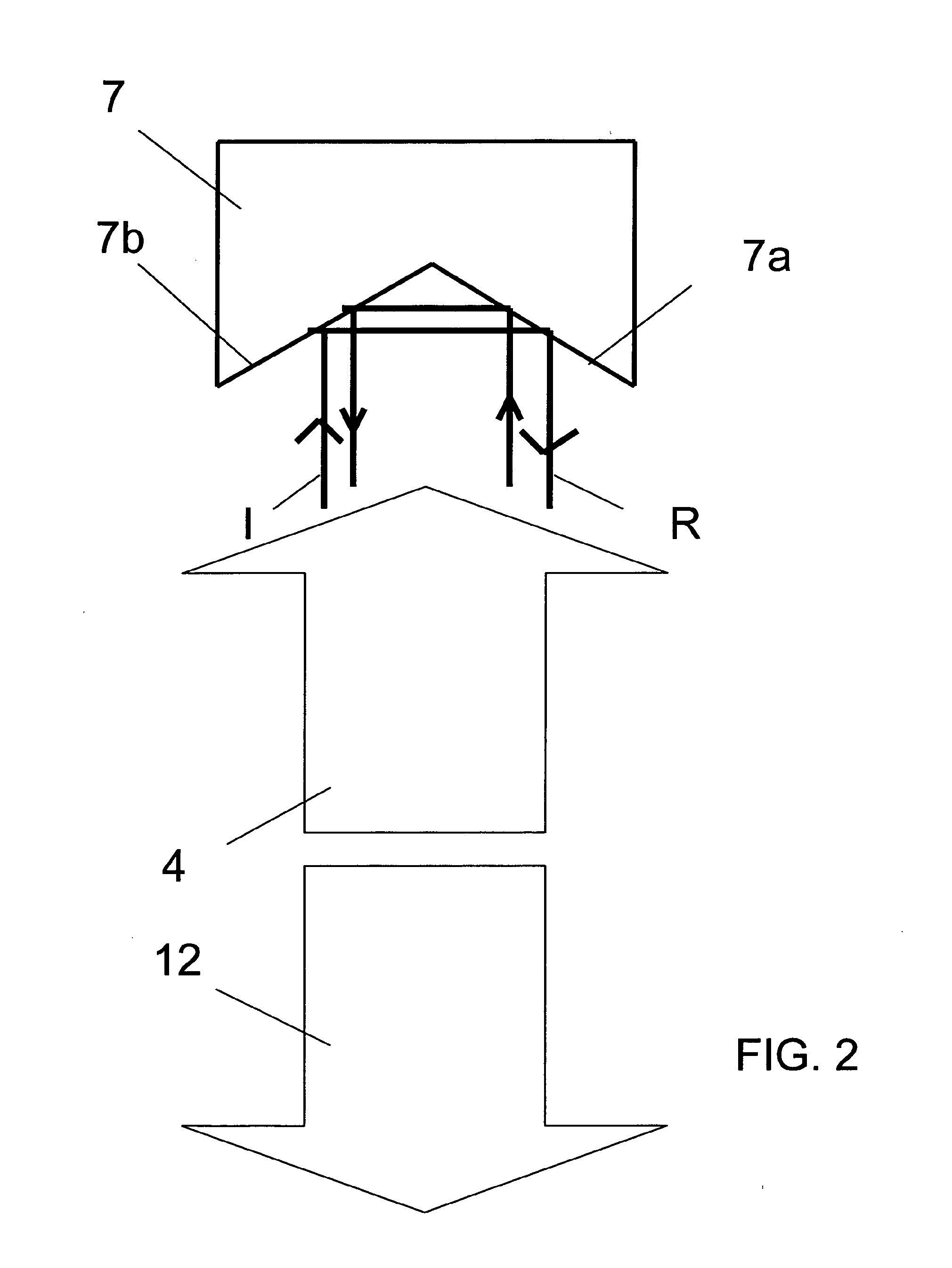Cold atom interferometry sensor
a sensor and cold atom technology, applied in the field of can solve the problems of complex and bulky cold atom interferometry sensors of the prior ar
- Summary
- Abstract
- Description
- Claims
- Application Information
AI Technical Summary
Benefits of technology
Problems solved by technology
Method used
Image
Examples
Embodiment Construction
[0034]In the figures, identical references relate, unless indicated to the contrary, to similar technical elements.
[0035]As illustrated in FIG. 1, an interferometry sensor 1 according to the invention comprises an atom source 11, in the form of a solid reservoir heated and controlled for temperature or a dispenser. The atom source is arranged to make it possible to obtain an atom vapour in a vacuum chamber 6, either by desorption of heat by means of a dispenser, or by light with a technique of the LIAD type, or by controlling the temperature of a cold spot. The vacuum chamber 6 comprises a glass tube the cross section of which may be square or circular. The vacuum chamber 6 is closed at one end by a window 5 and at the other end by a convex reflector 7 that will be described in more detail below. The reflector 7 preferably has a pyramidal shape, the base of the pyramid measuring between one centimeter and five centimetres. In order to reduce the effect of vibration to which the sens...
PUM
 Login to View More
Login to View More Abstract
Description
Claims
Application Information
 Login to View More
Login to View More - R&D
- Intellectual Property
- Life Sciences
- Materials
- Tech Scout
- Unparalleled Data Quality
- Higher Quality Content
- 60% Fewer Hallucinations
Browse by: Latest US Patents, China's latest patents, Technical Efficacy Thesaurus, Application Domain, Technology Topic, Popular Technical Reports.
© 2025 PatSnap. All rights reserved.Legal|Privacy policy|Modern Slavery Act Transparency Statement|Sitemap|About US| Contact US: help@patsnap.com



